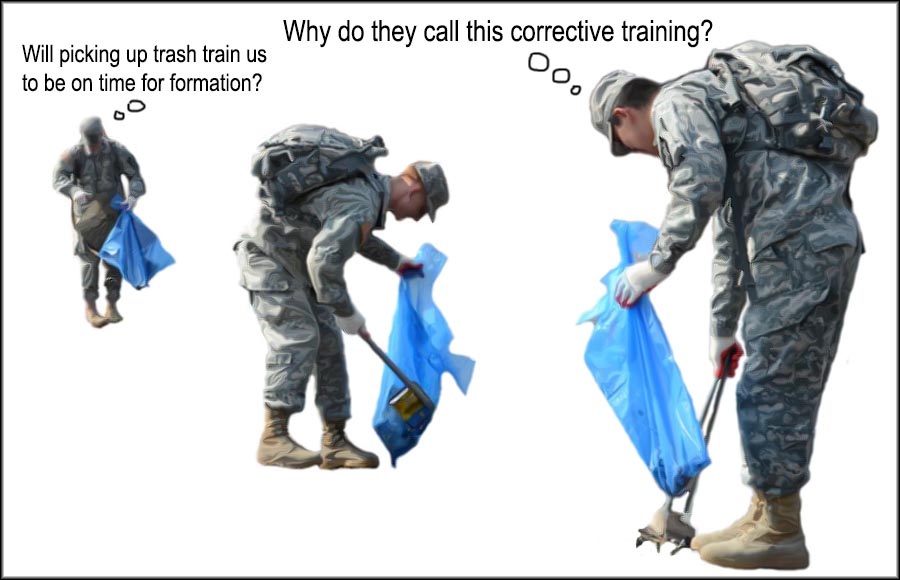Extra Duty Army Regulation
In accordance with Extra Duty Army Regulation, here is a comprehensive guide to understanding the active duty enlisted administrative separations in the Army. This regulation plays a vital role in ensuring smooth and efficient operations within the military, allowing personnel to perform their duties with utmost professionalism and discipline.
Image 1: Army 15t Duty Stations - Army Military

The Army 15t Duty Stations provide valuable opportunities for military personnel to serve in various locations. These duty stations offer unique experiences and challenges that contribute to the development of a well-rounded Army personnel.
Image 2: Active Duty Enlisted Administrative Separations (Army Regulation 635)
Active Duty Enlisted Administrative Separations are governed by Army Regulation 635. This regulation provides guidance on the procedures and requirements related to administrative separations for enlisted personnel in the Army. It lays out the principles and processes involved in separating a service member from active duty.
Understanding Active Duty Enlisted Administrative Separations
Active duty enlisted administrative separations are an essential aspect of maintaining discipline and professionalism within the Army. While each situation may vary, it is crucial to have a thorough understanding of the processes involved to ensure compliance and fairness.
1. Types of Administrative Separations
Under the Extra Duty Army Regulation, there are various types of administrative separations that can occur. These include:
- General Discharge
- Honorable Discharge
- Other Than Honorable Discharge (OTH)
- Bad Conduct Discharge (BCD)
- Dishonorable Discharge
Each type serves a different purpose and carries different consequences for the service member. It is important to understand the distinctions between these types and the potential impact on future opportunities within the military and civilian sectors.
2. Grounds for Administrative Separation
While enlisted personnel are expected to adhere to a code of conduct and professional standards, certain situations may arise that necessitate administrative separation. The Extra Duty Army Regulation outlines the grounds for administrative separation, which may include:
- Misconduct or serious offenses
- Moral or professional dereliction
- Pattern of misconduct
- Commission of a serious offense
- Drug abuse or dependency
- Failure to adapt or show progress
It is important for service members to be aware of these grounds and take necessary steps to avoid potential administrative separations.
3. Procedures and Due Process
The Extra Duty Army Regulation also provides a detailed outline of the procedures and due process that must be followed during an administrative separation. These procedures are in place to ensure fairness and protect the rights of the service member involved.
Some key aspects of the procedures include:
- Notification of the intent to separate
- Right to counsel
- Investigation and hearings
- Command review
- Final decision and appeals
By following these procedures, the Army aims to maintain integrity and uphold the principles of justice while dealing with administrative separations.
FAQs (Frequently Asked Questions)
Q1: Can administrative separations be appealed?
A1: Yes, administrative separations can be appealed. The separation authority's decision can be appealed within a specified time frame.
Q2: Will an administrative separation affect future benefits?
A2: The type of separation received can impact future benefits. Honorable discharges generally offer more benefits compared to other types of discharges.
Q3: How long does the administrative separation process take?
A3: The duration of the administrative separation process can vary depending on the circumstances and complexity of the case. It is important to consult with legal counsel for specific timelines.
These FAQs provide some initial guidance on common concerns related to administrative separations. However, it is always advisable to seek legal counsel and refer to the Extra Duty Army Regulation for comprehensive information and individualized assistance.
By adhering to the Extra Duty Army Regulation and understanding the processes involved in active duty enlisted administrative separations, military personnel can ensure that discipline and professionalism are upheld within the Army. It is essential to stay knowledgeable about these regulations to maintain the highest standards of service in the military.
Active Duty Enlisted Administrative Separations (Army Regulation 635
 Image Source : www.wook.pt
Image Source : www.wook.pt Military Style Extra Large Heavy Duty Kit Camo Duffle Bag
 Image Source : www.onlyarmysurplus.co.uk
Image Source : www.onlyarmysurplus.co.uk Extra Duty Form - Fill Online, Printable, Fillable, Blank | PdfFiller
 Image Source : www.pdffiller.com
Image Source : www.pdffiller.com Blue Falcon - Imgflip
 Image Source : imgflip.com
Image Source : imgflip.com Extra Duty Army Style - YouTube
 Image Source : www.youtube.com
Image Source : www.youtube.com Army 15t Duty Stations - Army Military
 Image Source : armymilitary.net
Image Source : armymilitary.net Shaving Profile Army Regulation
 Image Source : beardonbrother.blogspot.com
Image Source : beardonbrother.blogspot.com [DOWNLOAD]PDF Army Regulation AR 635-200 Personnel Separations: Active
![[DOWNLOAD]PDF Army Regulation AR 635-200 Personnel Separations: Active](https://www.yumpu.com/en/image/facebook/67235947.jpg) Image Source : www.yumpu.com
Image Source : www.yumpu.com Extra duty army style. Military style extra large heavy duty kit camo duffle bag. [download]pdf army regulation ar 635-200 personnel separations: active. Blue falcon. Army 15t duty stations